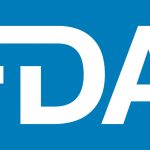In the rapidly evolving healthcare landscape, a convergence of factors, including payer reform, technological advancements, scientific breakthroughs and enhancing patient-centricity, are driving unprecedented industry transformation. Stakeholders across the value chain must recalibrate their strategies by integrating advanced medical sciences amid changing utilization patterns. To add to this, the symbiosis of technology, consumerism and data are amplifying care complexities, while regulatory pressures further compel adherence to global compliance policies to address disparities and foster member engagement.
To proactively adapt, organizations seek innovative technologies and models to improve the quality of care. Now, more than ever, artificial intelligence (AI) and cloud technologies are poised to reshape the healthcare ecosystem, reimagining care beyond the four walls of healthcare facilities. Personalization and digital transformation will be pivotal in determining the path ahead for independent software vendors (ISVs), medical device manufacturers, specialty providers, provider service plans (PSPs) and more. The focus is now on trends that can bolster secure high-quality care while reducing costs and dependencies in the care realm.
Trends Shaping Health Care of Tomorrow
With the care continuum undergoing metamorphosis, businesses face a critical juncture where emerging technologies, integrated vendor ecosystems and enhanced regulatory compliance will redefine care delivery and shape the needs of healthcare stakeholders.
Here are six healthcare technology trends to watch out for in 2024.
Cloud-first approach for value-based care. Many organizations are embracing cloud-native platforms to disburse value-based care. More organizations are leveraging SaaS solutions to optimize scalability and cost-effectiveness, streamline communication and improve patient care.
By seamlessly integrating data, electronic health records and video conferencing systems into a centralized repository, healthcare leaders can now achieve faster speed-to-value. Real-time data analysis can empower healthcare providers to provide enhanced patient care through informed decision-making and timely interventions. SaaS platforms can also simplify technology onboarding, minimize development resources and improve financial and operational outcomes. For example, health IT CRM systems can help healthcare leaders elevate their value chain and enhance data cycle management and interoperability while maintaining compliance.
AI-powered clinical decision support. AI (and, lately, GenAI) has been a game-changer in the health industry, with enterprises eager to tap into its unexplored potential. Healthcare organizations can leverage GenAI and analytics to automate the verification of patients’ eligibility and benefits for claims submission or cost optimization workflows, leading to augmented revenue cycle management. Enterprises can also harness GenAI to simplify and automate code or data migration based on data volume, sensitivity and network bandwidth.
Specialists can utilize GenAI to assimilate and review health reports and generate patient hand-offs before forwarding them to Electronic Health Records (EHR). Many hospitals are opening up to virtual medical documentation and live clinical support applications to elevate care consistency, patient safety and clinical quality while saving time.
Personalized patient care and engagement. In the year ahead, healthcare leaders will prioritize next-gen patient care for superior experiences, care quality and reduced costs. The demand spike for telemedicine is fueling the launch of smart wearables, digital health apps, closed-loop devices and clinical decision support systems (CDSS).
Smart wearables such as heart monitors and fitness watches help assimilate and transmit patient records, aiding research centers and pharmacies with faster diagnosis. Digital health apps enable remote monitoring, reducing hospital readmissions and costs while making healthcare accessible to those who need it the most.
As the need for effective telemedicine surges, AI-powered CDSS can help clinicians and medical experts simplify and augment complex tasks, alleviating pressure on the already burdened and burnout care professionals. Moreover, it allows for efficient data analysis, early disease detection and personalized treatment plans.
Digital transformation and data democratization. In 2024, the convergence of digital transformation and data democratization is poised to impact the healthcare landscape profoundly. The synergy of these two trends is expected to stimulate significant improvements in patient care, operational efficiency and overall healthcare outcomes.
The urgency surrounding care accessibility has led healthcare firms to lean towards data standardization, on-prem to cloud migrations, automation and legacy tech stack consolidations. Automation can help health personnel streamline operations, cut costs and boost patient outcomes by automating repetitive tasks, but it requires careful planning. Health firms can also leverage automation for legacy tech stack consolidations to eliminate complexity, efficiency and data security, which requires careful planning. While data standardization can help healthcare organizations facilitate increased interoperability, on-prem to cloud migrations will further support these efforts to help mitigate costs and enhance scalability and flexibility.
Integrated vendor partnerships. Many healthcare organizations are leaning toward vendor consolidations and Mergers and Acquisitions (M&As) as they view cost-effectiveness and sustainability as strategic imperatives. Vendor consolidation facilitates better integration of technologies, innovation and collaboration, leading to the development of solutions that better meet the healthcare industry’s unique needs. It also empowers procurement leads to enjoy greater purchasing power through bundled pricing.
Health leaders can significantly save significant time managing relationships and administrative tasks and cut down on input costs through comprehensive solution suites. Other advantages include:
- Better compliance adherence
- Improved vendor-company relationships and support
- Enhanced product and service quality
- Unmatched patient experience.
Enhanced regulatory compliance. Emergent digital health models, the rising adoption of cloud and SaaS, and changing policy mandates require heightened regulation and compliance adherence for flexible and transparent care management.
Furthermore, growing apprehensions around advanced cyberattacks and hefty fines due to noncompliance are urging healthcare providers to seriously consider AI-powered security solutions. This necessitates innovations in areas including but not limited to patient data, intellectual property rights (IPR) and incident management.
Fostering Innovation and Faster Care
Enterprises are recognizing that accelerated technology and process adoption can help enhance capabilities, optimize investments, ensure better compliance, reduce time-to-market and achieve substantial cost savings. Implementing these advancements for prompt delivery of high-quality care only makes sense.
Let us look into the tangible advantages the trends mentioned above confer upon patients and various stakeholders within the expansive healthcare ecosystem:
- Desired scalability and adaptability: Procurement leads can partner with hyperscalers to introduce plug-and-play components with built-in security features that need little to no integrations. Such comprehensive solutions enable enterprises to cater to evolving trends, attain faster time-to-market rates and bring down maintenance costs.
- Timely and accurate interventions: AI integration enables health organizations to build patient trust through upgraded prognoses and treatments. For example, AI-based radiology allows experts to identify complex patterns and provide quantitative assessments, facilitating better disease monitoring. In oncology, medical professionals can utilize superior analytics to expedite cancer detection.
- Improved care outcomes and population health: Advanced technologies, such as AI, ML and NLP, enable pharmaceutical and biotech firms to swiftly analyze diverse data sources, yielding valuable real-world evidence (RWE). Enhanced RWE supports accelerated drug development, quicker care interventions and strengthened patient safety. A well-defined RWE strategy elevates post-market surveillance and opens new business opportunities for strategy leads and care experts.
- Overall cost optimization: Enterprises are increasingly recognizing the benefits of industry-first best practices to deliver swift, cost-effective care. Innovations including remote patient monitoring (RPM), population health management (PHM) and clinical decision support (CDS) offer a single source of truth, enabling health experts to consolidate data and streamline their operations. HR managers can optimize hiring costs by focusing on core competencies rather than niche skill sets. Vendor consolidation can help healthcare units improve interoperability, strengthen their value chain and reduce operational costs, facilitating scale-up efforts.
In addition to the benefits mentioned above, enhanced regulatory compliance can help providers ensure improved patient safety and protection against legal pitfalls. Meanwhile, compliance programs can help healthcare managers reduce fraud risk, enhance operations and increase staff satisfaction. Adhering to regulations also fosters overall confidence in care quality and safety across the care continuum.
Charting the Future of Health Care
Healthcare leaders must rapidly adapt to evolving landscapes, regulations and patient requirements. Only by leveraging the potential of new technology and data-driven approaches can healthcare organizations redefine and strengthen their value chains. It goes beyond process and cost optimization. Ultimately, patient-centric innovations will pave the way for an inclusive, equitable and dynamic health ecosystem where everyone thrives.







